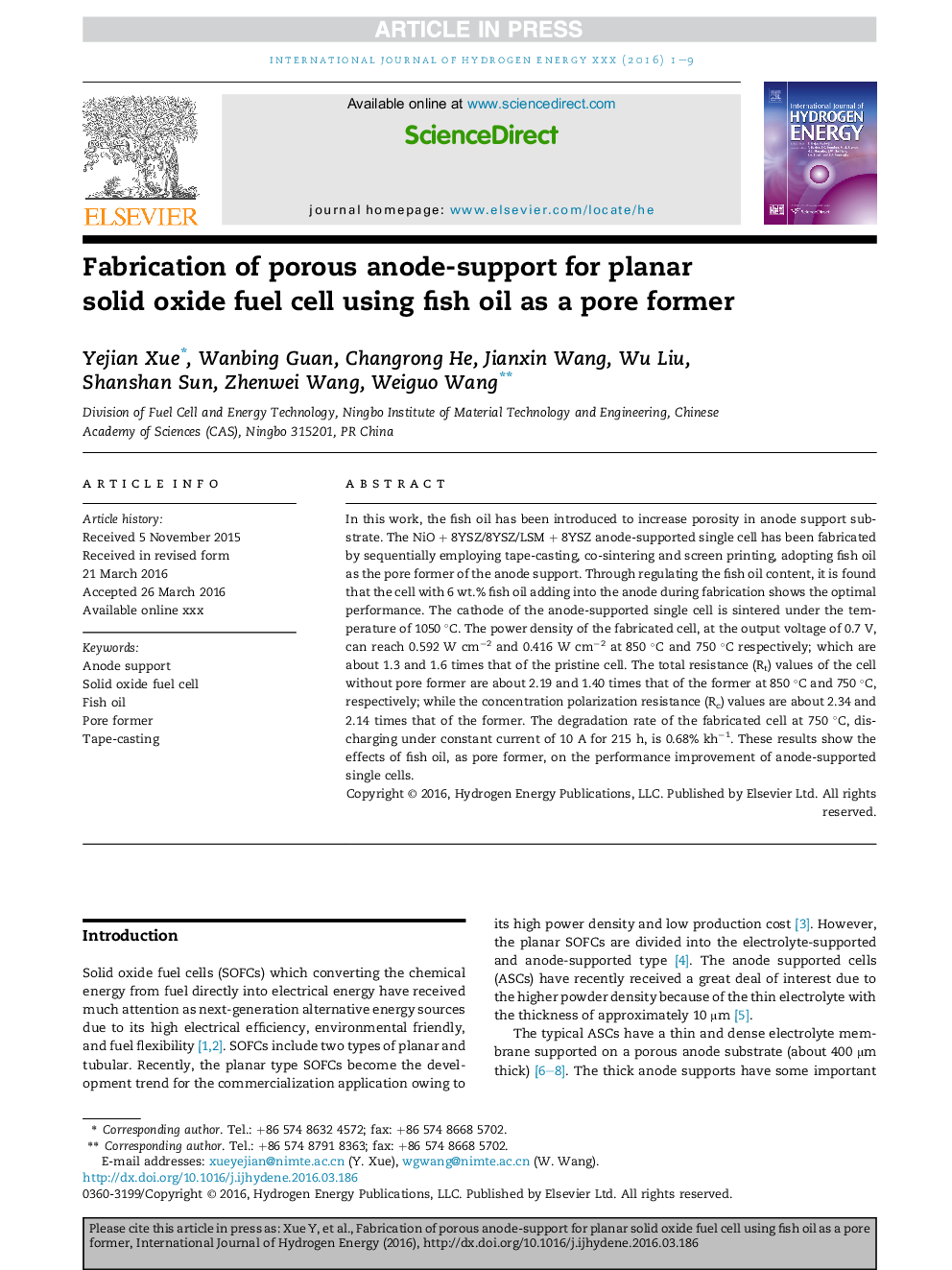| Article ID | Journal | Published Year | Pages | File Type |
|---|---|---|---|---|
| 7710831 | International Journal of Hydrogen Energy | 2016 | 9 Pages |
Abstract
In this work, the fish oil has been introduced to increase porosity in anode support substrate. The NiO + 8YSZ/8YSZ/LSM + 8YSZ anode-supported single cell has been fabricated by sequentially employing tape-casting, co-sintering and screen printing, adopting fish oil as the pore former of the anode support. Through regulating the fish oil content, it is found that the cell with 6 wt.% fish oil adding into the anode during fabrication shows the optimal performance. The cathode of the anode-supported single cell is sintered under the temperature of 1050 °C. The power density of the fabricated cell, at the output voltage of 0.7 V, can reach 0.592 W cmâ2 and 0.416 W cmâ2 at 850 °C and 750 °C respectively; which are about 1.3 and 1.6 times that of the pristine cell. The total resistance (Rt) values of the cell without pore former are about 2.19 and 1.40 times that of the former at 850 °C and 750 °C, respectively; while the concentration polarization resistance (Rc) values are about 2.34 and 2.14 times that of the former. The degradation rate of the fabricated cell at 750 °C, discharging under constant current of 10 A for 215 h, is 0.68% khâ1. These results show the effects of fish oil, as pore former, on the performance improvement of anode-supported single cells.
Related Topics
Physical Sciences and Engineering
Chemistry
Electrochemistry
Authors
Yejian Xue, Wanbing Guan, Changrong He, Jianxin Wang, Wu Liu, Shanshan Sun, Zhenwei Wang, Weiguo Wang,
